David Stairs
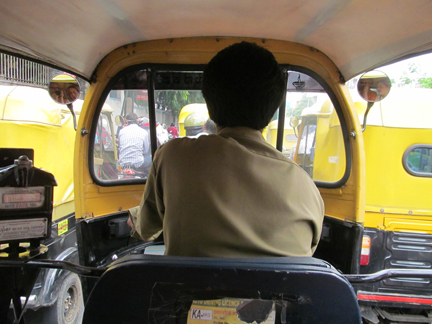
Motorcycles are the primary means of personal transportation in Bangalore. Every intersection is clogged with dozens of bikes and scooters impatiently waiting to break away when the light turns green, and when it does… off they roar like a swarm of angry hornets!
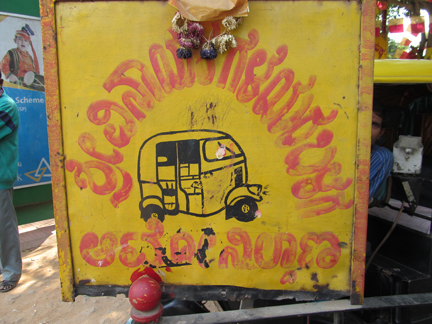
Autorickshaw stop, Yelahanka
When I stop to consider public transit, I have to remark the local bus system, which is frequent and cheap. My son and I spent a couple days figuring out how to use the buses and they are about 1/10th as expensive as formal taxis. But the buses are crowded and hot. They are also indirect, with many transfers necessary. For a more direct connection Bangaloreans depend upon something else, the three-wheeled autorickshaw.

For starters, all Bangalore rickshaw drivers, looking professional in their characteristic khaki uniforms, are required to post a pictured operator’s license in plain sight of passengers. Secondly, all autos have a meter. It is usually used at the driver’s discretion. A metered ride is usually more affordable than a set fare. Recently the base fare was increased to 20 rupees, the highest rate in India, but at about 40¢US, still a very reasonable amount.

We’d been warned to be careful when taking “autos.” Sometimes the drivers could be unscrupulous, we were told, make certain of an agreed upon fare. It’s easy. Most drivers use their meters. In one vehicle we even found a fare conversion scale, to help us with current base fare conversions after a fare increase. But haggling is expected. Like anything, it helps if all parties understand the terms, but I’ve found there is an amazing variety among drivers. While an autorickshaw will take you direct from point to point, the drivers sometimes get lost. Add to this the fact that drivers are often primarily knowledgeable of their own neighborhood, and do not always speak English very well, and you can get really waylaid.


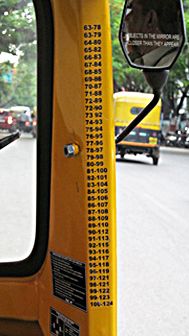
Listing of all current fare increase equivalences from 17 to 100 rupees
Rickshaws are very effective in heavy traffic, especially in the hands of drivers as aggressive as New York cabbies. Small enough to often fit three across a city street, like all tri-vehicles they are very maneuverable, turn on a dime, weave through traffic, and are easy to park. Most of them have what is known as a “limphome” capability, enough in reserve to make it to a service station when you’re running on fumes, although I’ve been with drivers who ran out of gas.
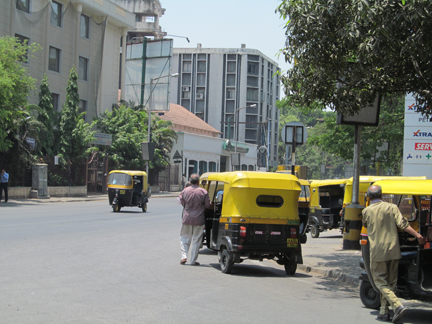
Rickshaw ballet: drivers pushing their jitneys into a fueling station
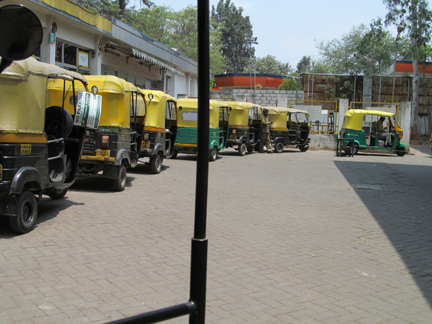
Rickshaws will fit three average, or four very skinny passengers. Their top speed seems to be about 35mph, depending on the size of the motor. The most common locally produced brand is Bajaj, their main competition is the Italian original, the Piaggio Apé. Richshaws have small 2 or 4-stroke engines and the old ones can be extremely dirty. So dirty, in fact, that the City of Bangalore instituted new restrictions on gasoline-powered rickshaws. All new vehicles, which are painted green and yellow instead of black and yellow, are required to run on either cng or lpg. Bajaj complies nicely by offering about seven models to choose from. This should go some way toward easing the city’s increasing smog problems.
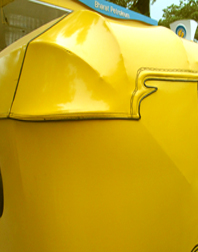
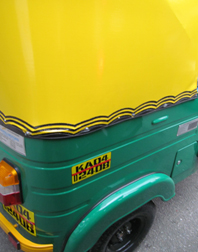
Canopy embroidering
Rickshaws are constructed of light gauge sheet steel and remind me of nothing so much as a high-speed golf cart. This is good for fuel efficiency. Although equipped with night illumination, some seem to be free of windshield wipers. The canvas canopy can be fancy or plain, and is sometimes embroidered, but as the vehicle is open on both sides, in a deluge the passengers definitely get wet. And the canopy superstructure is flimsy; it would not protect in the event of a rollover.

If you’re allergic to dust or diesel, a rickshaw won’t be your first choice. Because they are open on the sides and low to the ground, it’s sometimes necessary to hold one’s breath in heavy truck or bus traffic. But if you enjoy the color of a jitney ride through the lively chaos of Indian traffic, the autorickshaw is your ticket.
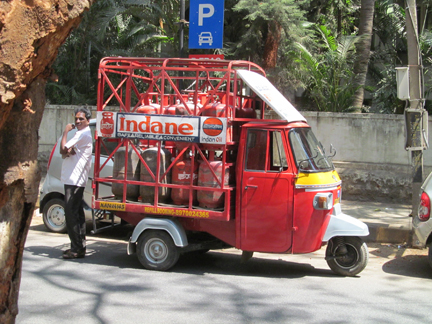
A Piaggio as a goods wagon
Indians don’t strictly reserve taxi rickshaws for passengers. I’ve seen them carrying freight many times, and Piaggio markets a series of autos that are strictly used for goods. Like their larger African cousin, the 16-passenger minivan, or mutatu, rickshaws are everywhere and are the workhorses of the local streets. But because of their availability and openness, rickshaws are even more flexible than minivans, although they also have a higher fare than their African cousins.

A Bajaj pressed into service
Bangalore is in the process of expanding its Metro, an elevated lightrail system, to a growing number of areas of the city. In the meantime, at ground level the most efficient way to get around is to stand in the street and wait for one of the 10,000 ricks to pull over.
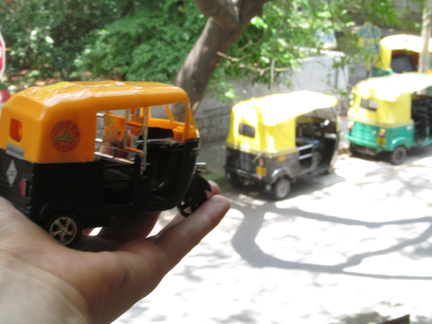
David Stairs is the founding editor of Design-Altruism-Project











Leave a Reply
You must be logged in to post a comment.